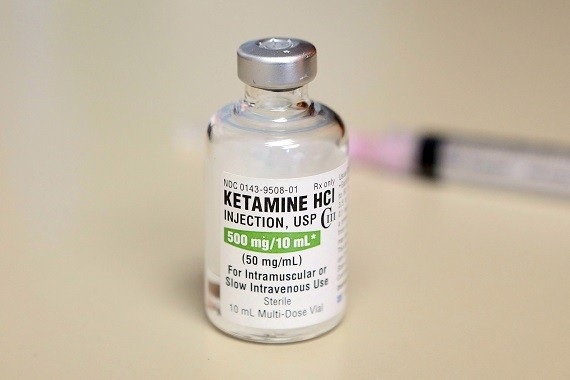A new study conducted by a team of investigators from the University of Tokyo in Japan, has recently found how ketamine fights depression in the brain.
Previous studies have shown that ketamine, an anesthetic can rapidly reduce severe symptoms of major depressive disorder, particularly the occurrence of suicidal thoughts.
Dr Conor Liston, one of the researchers behind the study explains how a ketamine is a potentially transformative treatment for depression, but one of the major challenges associated with this drug is sustaining recovery after the initial treatment.

To find out how ketamine works in the brain and identify the mechanisms that reduce depression symptoms, the researchers worked with mice that presented behaviors indicative of depression.
The team focused on dendritic spines. These are small protrusions on dendrites, which are brain cell extensions that help the neurons communicate among themselves. The dendritic spines are the parts that receive the stimuli that other neurons send out.
The researchers studied the dendritic spines in the prefrontal cortex of the mice’s brains both before and after they exposed some of the rodents to a source of stress.
They found that the mice demonstrating depression-like behaviors after experiencing the stressor lost dendritic spines more quickly than the control mice. Moreover, these mice had reduced formation of new dendritic spines.
The team also saw that exposing experimental mice to stress led to poorer connectivity and coordination of neural activity in the prefrontal cortex. These changes, the researchers explained, relate to typical behaviors in depression, which occur in response to stress.
When the researchers treated these mice with ketamine, they found that the animals regained functional connectivity and normal neuron activity in the prefrontal cortex, and they no longer displayed behaviors consistent with depression.
At 24 hours after receiving just one dose of ketamine, the rodents that the team had confronted with a source of stress did not show depression-like symptoms. Brain scans also revealed an increase in the formation of fully functional dendritic spines.
The scientists make a distinction between these findings. Mice that received ketamine, they explained, showed behavioral improvements within 3 hours of treatment, but they only experienced new dendritic spine formation between 12 and 24 hours after the treatment.
“Our results suggest that interventions aimed at enhancing synapse formation and prolonging their survival could be useful for maintaining the antidepressant effects of ketamine in the days and weeks after treatment,” Liston noted.
Although the researchers admitted that they will have to conduct more studies to understand the exact mechanisms at play, they believe, based on their current findings, that the formation of new dendritic spines may occur thanks to the fact that ketamine boosts brain activity in the prefrontal cortex.
The researchers also found that dendritic spines are likely to play an important role in maintaining the remission of depression-like symptoms in mice. When the team tried selectively removing newly grown dendritic spines in the mice’s brains, the rodents started expressing depression-related behaviors once again.
Dr Janine Simmons, who leads the National Institute of Mental Health’s Social and Affective Neuroscience Program noted that ketamine is the first new antidepressant medication with a novel mechanism of action since the 1980s. Its ability to rapidly decrease suicidal thoughts is already a fundamental breakthrough.
According to the report published on webmd, ketamine works like a flash mob, temporarily taking over a certain chemical receptor. In some cases and with expert medical care, that can be a good thing.
But when misused, ketamine can change your sense of sight and sound. One can have hallucinations and feel out of touch with their surroundings and even from themselves. It can make it hard to speak or move, and it’s been abused as a date-rape drug.
“Outside of the clinic, ketamine can cause tragedies, but in the right hands, it is a miracle,” says John Abenstein, MD, president of the American Society of Anesthesiologists.











cheap tadalafil – tadalafil generic name generic tadalafil reviews
Best Post ever